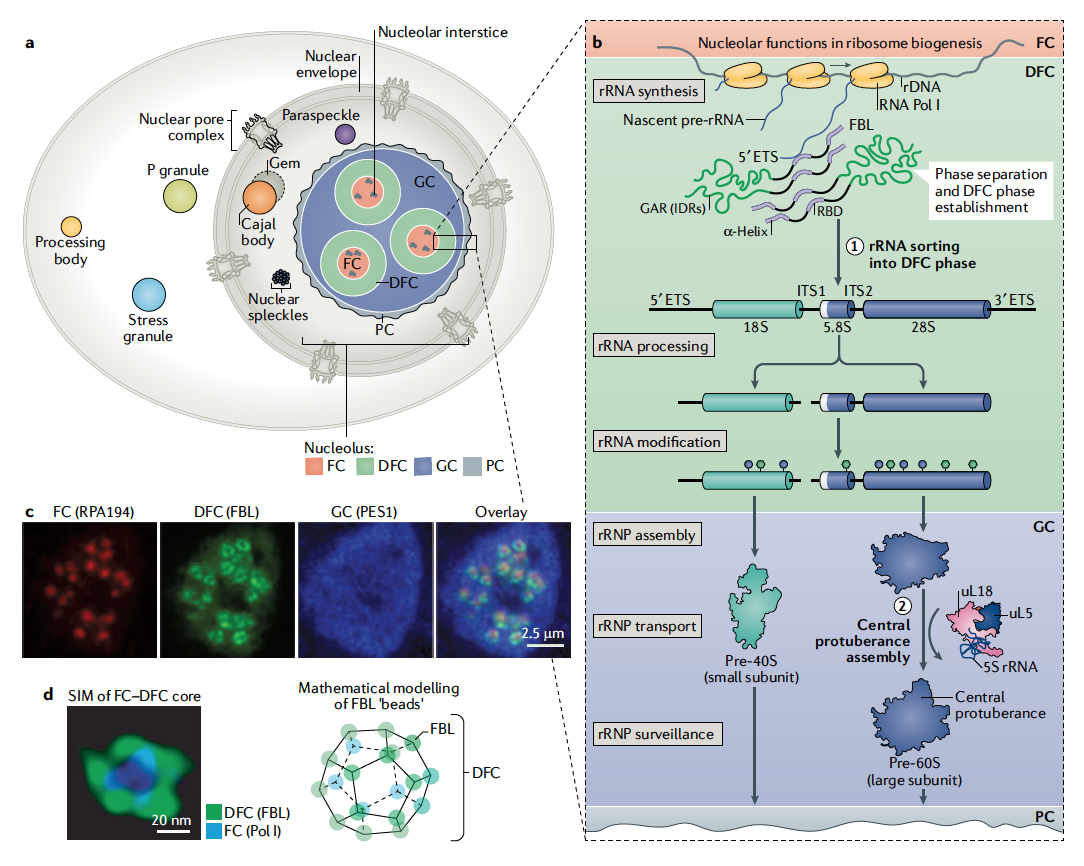The nucleolus is the most prominent nuclear body and serves a fundamentally important biological role as a site of ribonucleoprotein particle assembly, primarily dedicated to ribosome biogenesis. Despite being one of the first intracellular structures visualized historically, the biophysical rules governing its assembly and function are only starting to become clear. Recent studies have provided increasing support for the concept that the nucleolus represents a multilayered biomolecular condensate, whose formation by liquid–liquid phase separation (LLPS) facilitates the initial steps of ribosome biogenesis and other functions. Here, we review these biophysical insights in the context of the molecular and cell biology of the nucleolus. We discuss how nucleolar function is linked to its organization as a multiphase condensate and how dysregulation of this organization could provide insights into still poorly understood aspects of nucleolus-associated diseases, including cancer, ribosomopathies and neurodegeneration as well as ageing. We suggest that the LLPS model provides the starting point for a unifying quantitative framework for the assembly, structural maintenance and function of the nucleolus, with implications for gene regulation and ribonucleoprotein particle assembly throughout the nucleus. The LLPS concept is also likely useful in designing new therapeutic strategies to target nucleolar dysfunction.
See Lafontaine et al. (2020) Nature Reviews Molecular and Cellular Biology 01 September 2020
